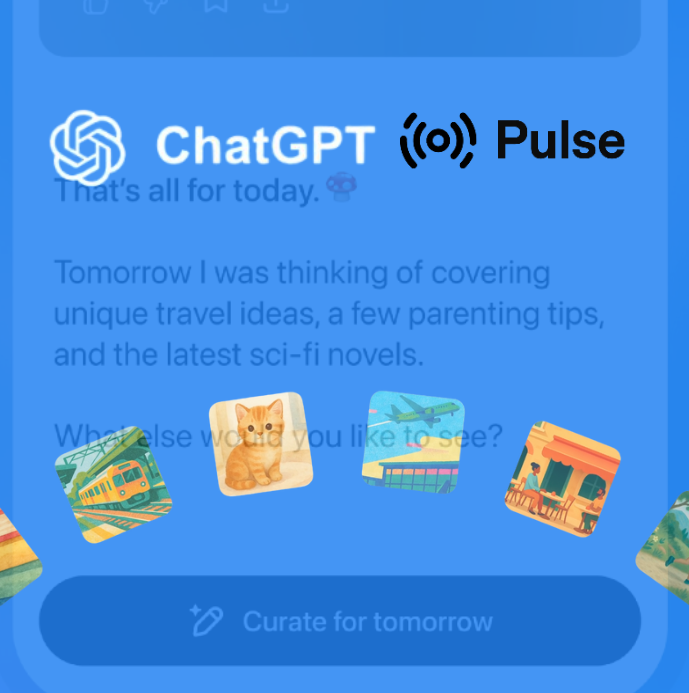
In the last two years, we’ve come to understand something simple: AI is no longer something we can live without.
It quietly joined the list of obvious things we need-right up there with running water, electricity, a roof over our heads, and, as we all learned during COVID, a stable internet connection.
AI has become part of the cost of living. Not a luxury. A basic need.
We now accept that it’s something we’ll have to pay for, and we’re already doing it-sometimes without even noticing.
If you’re like us, you’ve probably had a moment where you wondered:
What will $200 a month actually buy us in the world of AI?
So we did the math.
Here’s a practical breakdown of how a $200 monthly AI budget can be invested wisely:
| Category | Suggested Spend | Purpose |
|---|---|---|
| Core AI Tools | $120–$140/month | ChatGPT Pro/Team, Claude Max, Gemini Advanced, Perplexity Pro – choose based on what you actually use and rotate as needed. |
| Learning & Guidance | $40–$60/month | Courses, paid newsletters, communities, workshops, or 1:1 consults that help you understand how to apply what you’re using. |
| Experiment Budget | ~$10–$20/month | Room to try something new - a design tool, automation platform, or AI plug-in that could surprise you. |
This budget isn’t about getting access to every tool - it’s about getting closer to the tools that matter, the knowledge to use them well, and the flexibility to keep learning.
Understanding the Need: Is There One?
Before we go any further, it’s worth asking: Is there even a real need for this kind of AI investment?
For some people, AI still feels like a nice-to-have. Something to explore when there’s time, or use now and then when curiosity strikes. But for many of us, that’s already changed. AI has become part of how we think, how we create, how we make decisions, and how we work. It’s no longer just a tool-it’s part of the rhythm of our lives.
You don’t need to be an expert in AI to feel this shift.
Just like you don’t need a driving licence to understand how a car works, or what to do once you’re inside. You might not be the one behind the wheel, but you still know where you’re going, how to move forward, and what your role is in the system around you.
AI is becoming the same kind of presence.
Even if you’re not the one building it, training it, or prompting it professionally, it’s there. Quietly integrated into our workflows, our conversations, our tools. And with every new product, every update, every interaction-it’s taking up more space.
That creates a very real gap.
Because while AI becomes more accessible, the way we understand it hasn’t caught up yet.
Most people feel they need to be close to it-not just to keep up, but to stay part of the world that’s taking shape around them. The same way no one wants to be the person who doesn’t know how to get around in a car-dominated world, no one wants to be left behind in a world shaped by AI.
So yes-the need is there.
Not just for access to AI, but for comfort with it.
We’ve already adapted more than we realize.
Now we just need to understand what we’re actually spending-
and what we’re really getting in return.
You Are Not Alone
If you’ve made it this far, I’ll assume you’re here for the same reason we were-because you want to know if you’re the only one thinking this way.
You’re not.
We wanted to see if this feeling we had-that AI has become a basic need-was something others were experiencing too. So we looked around, dug into the numbers, and turns out… we’re in very good company.
Let’s start with the big picture.
As of this year, ChatGPT alone has over 700 million weekly active users.
That’s not total accounts. That’s weekly use.
Out of those, at least 10 million people are paying for a subscription-whether it’s ChatGPT Plus, Team, or Pro. And that’s just one platform.
In the U.S., there are an estimated 3.9 million paying ChatGPT users, with even more using premium AI tools like Claude, Gemini, Perplexity, and Grok. Add that up across developed countries, and you start to see the shift: AI isn’t just being used. It’s being paid for. Regularly.
According to recent reports, about 1 in 10 Americans now pay for AI tools-and among people aged 25 to 34, that number jumps to almost 1 in 5.
These aren’t just tech people or early adopters. These are everyday professionals, creators, business owners, students-people who now see AI as part of how they function.
So if you’ve found yourself budgeting for AI like you would for internet or cloud storage, you're not imagining it. The numbers say this is real.
We Made a Table Comparing The Different LLMs' Number of Users
Everything just makes more sense when you can see it side by side.
So we pulled together the latest estimates on adoption and paying users across the leading LLM vendors.
Here’s how things look:
|
LLM Vendor |
Estimated Users |
Estimated Paying Users |
Notes |
|
OpenAI (ChatGPT) |
700M weekly active users |
~10M+ (Plus, Team, Pro) |
Largest global reach, multiple paid tiers |
|
Anthropic (Claude) |
~25M monthly visits |
~500K–1M Claude Pro / Max |
Gaining traction fast, especially after Claude 3 |
|
Google (Gemini) |
~100M+ (across Gemini tools) |
~1M+ (Gemini Advanced) |
Premium access bundled with Google One |
|
xAI (Grok) |
~10M+ (via X/Twitter Premium+) |
Unknown (bundled with Premium+) |
Access linked to X Premium+ subscribers |
|
Perplexity |
~50M monthly visits |
~250K+ paid Pro users |
Strong among researchers and early adopters |
AI that's $200 a Month
Now that we’ve seen how many people are using and paying for AI, the next question is simple:
What do you actually get for $200 a month?
At this level, you’re stepping into the world of high-performance AI-designed for people who rely on it daily to think, write, create, research, or lead.
Here’s what $200/month looks like across today’s leading platforms:
|
Platform |
Plan |
Approx. Monthly Price |
What You Get |
|
OpenAI (ChatGPT) |
ChatGPT Pro / Team |
$20–$60+ (scales with seats) |
Access to GPT-4o, custom GPTs, faster speeds, higher usage limits, and team tools |
|
Anthropic (Claude) |
Claude Max |
~$30/month |
Access to Claude 3 Opus, premium speed and reasoning, long memory, high context window |
|
Perplexity |
Perplexity Pro |
~$20/month |
GPT-4, Claude, and proprietary models with built-in citations and source memory |
|
Google (Gemini) |
Gemini Advanced |
$19.99/month |
Access to Gemini 1.5 Pro, integrated across Gmail, Docs, and Google apps |
|
xAI (Grok) |
X Premium+ |
$16/month (via X subscription) |
Grok 2 access inside X (Twitter), conversation style tuned for current events and memes |
At around $200/month, many users mix and match across these platforms, building a custom stack that reflects their habits, workflows, and needs.
Some use ChatGPT to write, Claude to think, Gemini to organise, Perplexity to research, and Grok to keep up with trending chaos.
It’s not about choosing one. It’s about curating a combination that works.
Can We Do It Alone?
From the outside, it might seem like we should be able to figure this out ourselves.
But everything we’re seeing says otherwise.
The rise in online content, digital courses, workshops, paid communities, and newsletters makes one thing clear: we’re all looking for help.
We don’t just want tools-we want to understand how to use them.
Our lives are full.
AI is moving fast.
And no one has time to stop and “figure it out later.”
So when we talk about spending $200 per month on AI, we know that part of that cost won’t just go toward the tools themselves-it’ll go toward education.
Because keeping up requires more than access.
It requires learning.
And when you look at how much people are already spending just to stay current, it all starts to make sense.
Here are some numbers:
|
Type of Learning |
Typical Price Range |
What You Get |
|
Short self-paced courses |
$49 – $147 |
Pre-recorded videos, basic workbooks |
|
Deep-dive online classes |
$197 – $497 |
Multi-week courses with exercises and guided content |
|
Professional micro-courses |
$700 – $1,600+ |
Advanced niche topics (e.g. legal, tech, finance) |
|
Newsletter-based education |
$5 – $20/month |
Ongoing insights, case studies, curated breakdowns |
|
1-on-1 consultation sessions |
$100 – $300/hour |
Personalised strategy, guidance, or technical support |
So no-you’re not supposed to “just know.”
The demand for guidance is real, and part of staying in the loop today means choosing to invest in learning as you go.
And that’s what AI spending reflects too.
A portion of that $200 is no longer just about “what it can do.”
It’s about helping you understand how to use it in your world, your way.
Frozen Light Team Perspective
Spend, cost, and what supports you - it may not be the kind of headline that announces when the next ChatGPT is dropping, but for us, it's just as important.
Because the truth of life is, understanding how the world looks for us gives us the option to see other ideas, try other paths, and maybe consider something we haven’t yet.
This goes with love to all the people who, like us, already accepted that AI is here to stay.
So the question becomes: how do we invest smartly in our own future growth - so we’re not the ones left behind?
We believe AI won’t replace us. But we can be replaced by someone who knows how to use it better than we do.
And that’s why we can’t leave our future in the hands of some company’s roadmap or wait until we "have time." It’s a must.
So to all of you out there - tell us what you think.
How do you spend your budget?
Are we crazy for thinking $200/month is a logical investment?
This is a public service - to anchor a place online for real conversation.
So our only ask: share this. Start the talk.
We can’t wait to hear from you.








